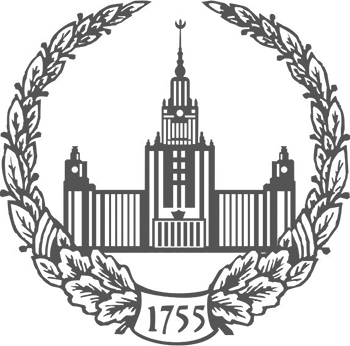-
“in the state of Hispania the air is wholesome and jolly”: Piotr Potemkin in Spain, 1667–1668 (notes on a new collection of documents)Moscow University Bulletin. Series 8: History 2022. N 3. p.19-40read more1039
-
The article considers the latest publication of a set of documents on the history of Russian-Spanish relations in the late 1660s, carried out by V.A. Vedyushkin and E.E. Rychalovsky and featuring B.N. Florya, O.V. Volosyuk and other major Russian researchers. The author of the article notes the numerous advantages of the publication, points to its innovative nature, and draws attention to the specifi c research prospects that this detailed work provides for a wide range of scientists. The collection occupies a prominent place among the publications of sets of documents and closes a noticeable gap in the studies of Russian- Spanish relations of the Eearly Modern period carried out in recent years. This publication can be considered unique due to the fact that the presented materials allow comprehensive study of the first fully fledged Russian embassy to Spain, as well as the identifi cation of the features of both the Russian and Spanish views on the events. The collection is accompanied by supplementary materials, which are highly professionally compiled and exceptionally detailed. These are, first of all, introductory articles reviewing Russian-Spanish relations and the personality of P.I. Potemkin, as well as annotations to the documents and end notes on a number of individual but relevant issues. All these texts provide scholars with extensive new data. Even more new information awaiting its researcher can be found in the first published sources of Russian and Spanish origin, thus introduced into scientific circulation. They not only provide an opportunity to comprehend the goals, course, and results of P.I. Potemkin’s embassy as well as the embassy ceremonial, but also contain vivid details for studying the reciprocal views of Russians and Spaniards (including in a historical retrospective) and even the self-awareness of the ambassadors. The published documents are a rich source of evidence about the daily routine and manners of the Russian ambassadors in Spain, the difficulties they encountered on the way, and the range of everyday problems that they had to solve. Of exceptional interest is also the information related to economy.
Keywords: Russian-Spanish relations; Ambassador P.I. Potemkin; publication of sources; Stateiny Spisok of the Russian embassy; ambassador’s reports; intercultural communication
-
-
The Department of Russian History up to the Beginning of the Nineteenth Century from the 1960s through the 1980s, According to its Meeting MinutesMoscow University Bulletin. Series 8: History 2024. N 3. p.110-126Natalia V. Kozlova Goryushkina L.P. Kalinin M.V. Aleksei V. Laushkin Matasova T.A. Tarasov A.E. Khitrov D.A. Shemiakina O.D.read more484
-
This article examines the scientific and educational life of the Department of USSR History in the Feudal Period (now the Department of Russian History up to the Beginning of the Nineteenth Century), one of the oldest departments at the Faculty of History of Lomonosov Moscow State University, from the 1960s through the 1980s. It is based on the department’s archive, which contains meeting minutes and other materials, which were systematized and studied by the department’s staff in preparation for the 90th anniversary of the Faculty of History. During these years, the department consisted of a large and active team of about 20 employees, delivering numerous courses, conducting active methodological work, regularly presenting scientific reports at meetings, and discussing dissertations of graduate students and PhD candidates. The department’s activities were marked by extensive collaboration with various scientific institutions, archives, and museums, as well as having wide international connections, including a significant number of foreign visiting scholars from socialist countries, Western Europe and America. As one of the key graduating departments of the faculty, the Department of Feudalism paid great attention to working with undergraduate and graduate students. Many prominent modern scholars, now working in leading scientific institutions, emerged from its ranks. Professors of the department during these years — M.T. Belyavskiy, N.B. Golikova, A.D. Gorskiy, L.V. Milov, G.A. Novitskiy, and A.M. Sakharov — created large scientific schools, which continue to play an essential role in the development of historical science today. The article also characterizes the department’s eff orts to optimize the educational process and addresses how personnel issues were resolved. It highlights that the department led a vibrant, dynamic, and full-blooded life, with its meetings marked by a democratic and constructive atmosphere. The creative educational and scientific activity fostered professional growth and integration of young teachers and graduate students into university environment.
Keywords: Faculty of History, Lomonosov Moscow State University, Department of USSR History in the Feudal Period, M.T. Belyavskiy, A.D. Gorskiy, N.B. Golikova, A.M. Sakharov, L.V. Milov, L.G. Kislyagina, university traditions
-
-
Is it possible to tame the sea? The image of a stormy sea in the monuments of Russian literature and popular consciousness from the 13th through the 18th centuriesMoscow University Bulletin. Series 8: History 2024. N 4. p.16-38read more519
-
The objective of the present study is a complex reconstruction of the image of a sea storm as depicted in Russian sources, with a particular focus on those from the period up to the beginning of the 19th century. The subject of the study is the formation and evolution of representations of sea storms in Russian culture during the specified time period, the identification of the distinctive characteristics of these representations, their correlation and interrelation, and the determination of the factors that could have influenced them. Sources of various origins were used, ranging from translated exegetical works, such as Six Days of Creation by Basil the Great and John Exarch of Bulgaria, and original hagiographic works including the hagiographies of Zosima and Savvatii of Solovki, Tryphon of Pechenga, and others, to the poetry of M.V. Lomonosov and works of folklore: Pomor laments, “expectancies”, incantations, proverbs and sayings, northern bylinas and ship’s cantos. Such generalizing studies have not been carried out before. The analysis of endeavors to subjugate the sea storm, as evidenced by monuments of folk culture, is a particular focus of the study. The article employs specific illustrations to demonstrate the impact of Christian culture and literary works, both original and translated, on folkloric traditions, in the context of comprehending the sea’s image. The analysis demonstrates that the notion of subduing the sea, as depicted in the sources examined, is a multifaceted and enigmatic concept. On the one hand, the Christian conception posits that the sea’s indomitable waves are subject to the divine control of the Creator (or saints acting in accordance with His will). This notion is articulated most vividly and comprehensively in the sources under consideration. In contrast, there are various accounts of attempts to harness the power of the sea for human purposes, although these are not numerous. Notably, Peter the Great is depicted in certain monuments as the sole figure capable of weathering the storm, suggesting a cultural and historical significance in this portrayal. The depiction of Peter the Great as the sole figure capable of resisting the storm is indicative of the apologetics of autocracy in the popular environment. Romantic associations with the image of a sea storm are not a feature of Russian culture prior to the Modern period.
Keywords: image of the sea, storm, literacy in Russia, popular consciousness, Russian folklore, Peter the Great
-

ISSN 0130-0083


